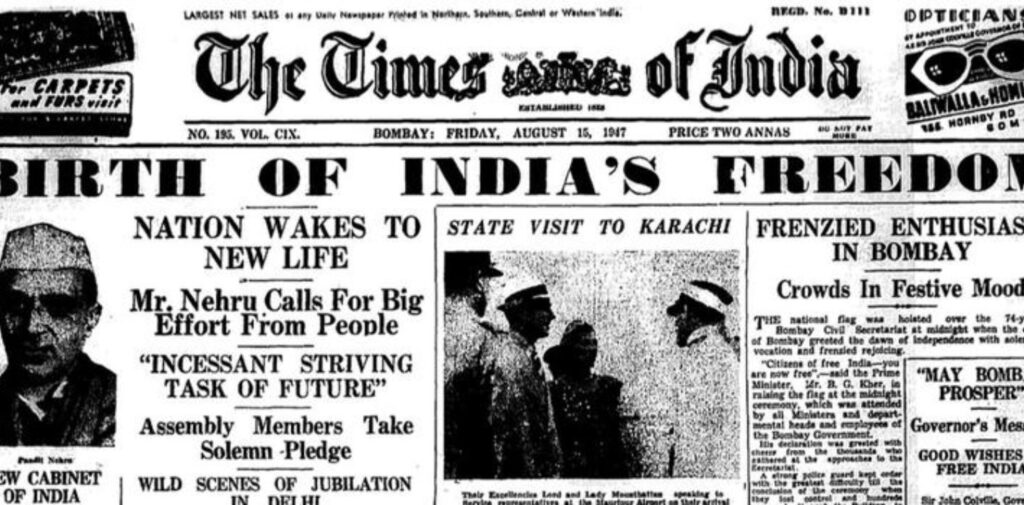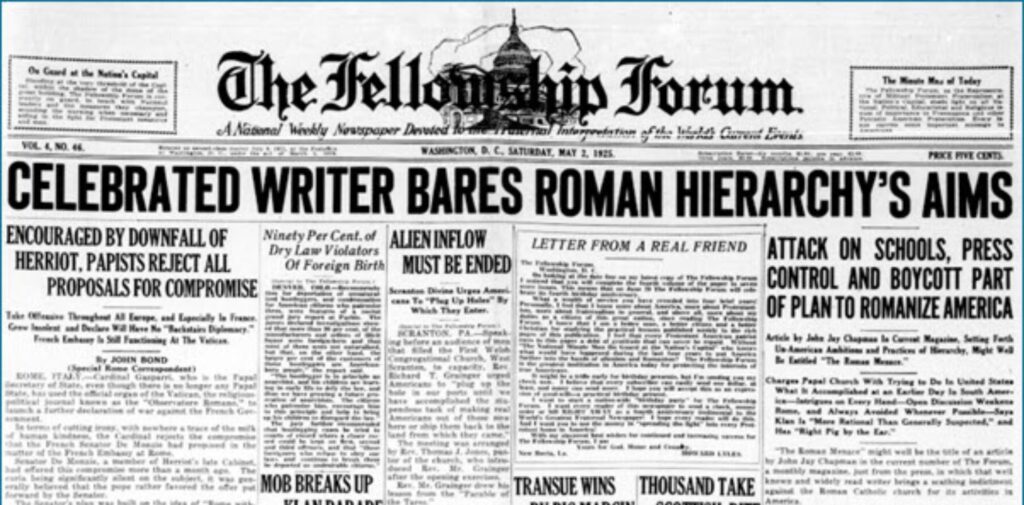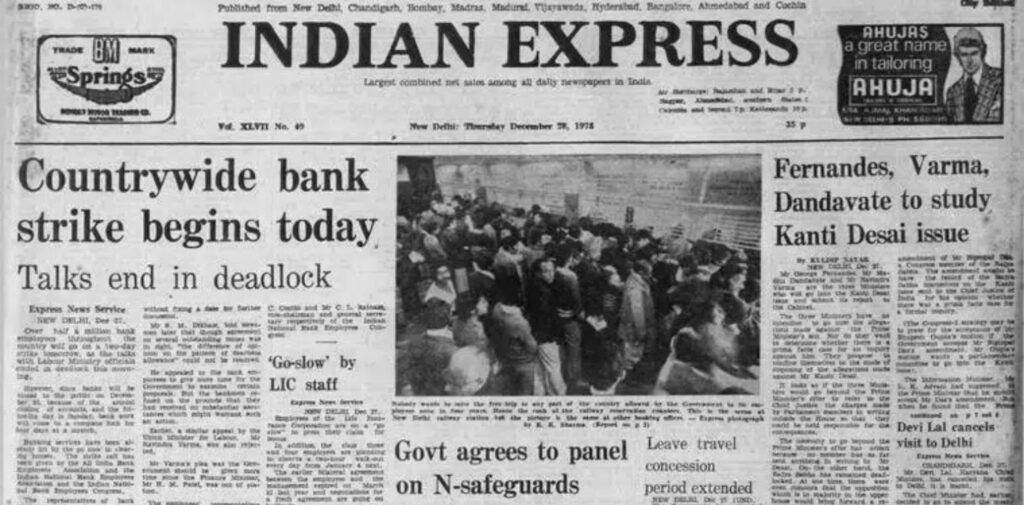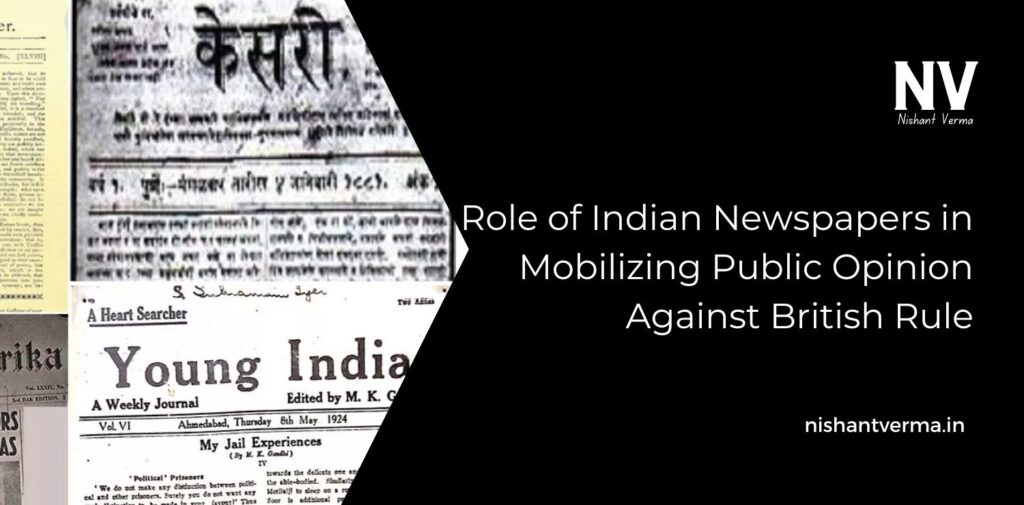In the history of India’s struggle for independence, many people played important roles, from great leaders like Mahatma Gandhi and Jawaharlal Nehru to common men and women who fought for freedom. However, one of the most powerful forces in spreading the message of independence was the media, especially newspapers. The role of Indian newspapers in mobilizing public opinion against British rule is very significant, as they helped to spread awareness, inspire people, and unite them in the fight for freedom. Let’s explore how Indian newspapers became a tool of resistance during British colonial rule.
The Beginning of Indian Newspapers
Before British rule, India did not have a lot of printed materials to share news. However, when the British started controlling India in the 18th century, newspapers began to emerge. The first Indian newspaper, Hicky’s Bengal Gazette, was started in 1780 by an Irishman named James Augustus Hicky. Though this was the beginning of newspapers in India, it was not until the 19th century that the real power of newspapers began to show.
In the 1800s, more and more newspapers started being published in various languages across India. These newspapers were mostly started by Indians who had a deep interest in the country’s well-being. They saw the importance of using newspapers as a means to express their thoughts and ideas about the British government and its unfair treatment of the Indian people.

Newspapers as a Voice of the People
As India moved into the 19th and early 20th centuries, the British government continued to take away the rights and freedoms of Indians. This made the people angry, and many of them began to question the British rule. Newspapers became one of the most effective ways for people to share their opinions, news, and feelings about what was happening in their country.
Some of the most famous newspapers like The Hindu, Kesari, Amrita Bazar Patrika, and The Times of India became very important in those times. These newspapers published articles that spoke against the unfair practices of the British and highlighted the need for Indian independence. These newspapers helped to open the minds of the people, making them realize that they had the power to stand up and demand freedom.
Educating the Masses
At that time, many Indians did not know much about the world outside their villages or cities. Most of them were not aware of the political situation and how the British were treating the country. But newspapers became a way to educate them. Journalists and editors wrote stories that explained the British government’s wrongdoings. They shared information about movements happening across the world, such as the struggle for independence in other countries, so that Indians could understand that they were not alone in their fight for freedom.
These newspapers also spread knowledge about important leaders like Mahatma Gandhi, Subhas Chandra Bose, and Jawaharlal Nehru, who were leading the fight for independence. As people read about these leaders and their messages, they were inspired to join the movement and contribute to the freedom struggle.
Raising Awareness about British Exploitation
One of the key roles played by Indian newspapers was raising awareness about the British exploitation of India. The British were taking India’s natural resources, using its people as cheap labour, and leaving the country in poverty. Newspapers reported about this in detail. They published stories about how the British were taking away India’s wealth and how Indians were suffering under their rule. This helped the common man realize that the British government was not working for their benefit but for its profit.
For example, the famous newspaper Kesari, started by Bal Gangadhar Tilak, published articles that exposed how the British were misusing their power. Tilak himself wrote a lot of articles to inspire people to resist British rule. He used his newspaper to urge Indians to unite and fight for their freedom.

Newspapers as a Platform for Nationalism
Newspapers not only exposed the cruelty of the British, but they also played a major role in spreading nationalism. Nationalism is the belief that people of the same country should come together, work together, and fight for their common goals. Indian newspapers started promoting the idea that all Indians, whether they were Hindus, Muslims, Sikhs, or from any other community, should come together to fight against British rule.
These newspapers began to print stories about the importance of unity. They emphasized that Indians needed to stand as one against the British, no matter their differences. This helped the people of India to see themselves as one nation, rather than separate groups. Newspapers like The Hindu and Amrita Bazar Patrika played a significant role in promoting this sense of unity.
Creating a Spirit of Protest
Another important role of newspapers during the independence struggle was that they encouraged people to protest. The British government had many laws that restricted freedom of speech, and they tried to control what was published in newspapers. But despite this, the Indian newspapers continued to report on the issues facing the country. When important events like the Jallianwala Bagh massacre or the Salt March happened, newspapers became the medium through which people learned about these events and got motivated to take action.
For example, when Mahatma Gandhi led the Salt March in 1930, Indian newspapers gave extensive coverage to the event, making the people aware of the importance of the Salt Law and how the British were trying to control something as basic as salt. This news sparked protests all over the country, as people came out to break the salt law.
Press Censorship and the Fight for Freedom of Expression
The British government understood the power of newspapers and tried to control what was being published by imposing press censorship. They would often stop the publication of newspapers that were seen as promoting anti-British views. Despite this, many journalists and editors continued to fight for the freedom of speech and expression. They used clever ways to keep publishing important news and ideas.
Leaders like Lala Lajpat Rai and Bipin Chandra Pal used newspapers to voice their opinions about the importance of independence. Even though they faced many challenges, they kept fighting to ensure that the voices of Indians were heard.

The Legacy of Indian Newspapers
The role of Indian newspapers in the fight for independence cannot be overstated. They were not just sources of information but also powerful tools for shaping public opinion, educating people, and motivating them to take part in the struggle for freedom. The newspapers of that time helped create an atmosphere of resistance against British rule and played an important role in bringing the country together.
Even today, we can see the impact of those early newspapers in shaping the history of India. The spirit of journalism that promoted truth, freedom, and unity continues to inspire Indian media today.
Conclusion
Indian newspapers were instrumental in mobilizing public opinion against British rule. They helped spread awareness, encouraged protests, and created a sense of unity among the Indian people. Through their work, they educated the masses about the British government’s unfair practices and inspired them to join the freedom struggle. The newspapers of the past not only helped in the fight for independence but also laid the foundation for the free press that we enjoy today in India.
In a way, Indian newspapers became the voice of the nation, speaking out for justice, equality, and the right to live freely. Today, when we look back at the role of the media in India’s independence movement, we can see that it was a powerful weapon in the hands of those who fought for the freedom we enjoy today.




